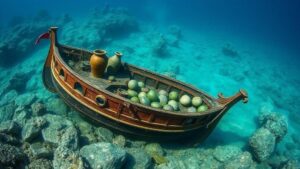Techniques for Finding Bone Carvings in Eroded Coastal Areas
Techniques for Finding Bone Carvings in Eroded Coastal Areas
The study of bone carvings in eroded coastal areas offers a fascinating glimpse into the cultural practices of ancient societies. Such archaeological endeavors, however, require an understanding of the geological and environmental conditions that enhance or obscure these artifacts. This article explores a range of effective techniques for discovering these carvings, drawing upon both traditional methods and modern technologies.
Understanding the Coastal Erosion Process
Coastal erosion occurs when waves, currents, tides, and human activity alter the coastline, leading to the exposure and sometimes destruction of archaeological sites. One essential aspect of locating bone carvings is understanding how erosion exposes these artifacts.
For example, in areas where soft sedimentary rocks are prevalent, the erosion process can rapidly reveal ancient layers that may contain bone carvings. On the other hand, in regions dominated by hard igneous rock, erosion may occur at a slower rate, limiting immediate access to potential archaeological sites.
- Identification of erosion-prone zones based on geological surveys
- Monitoring seasonal changes in coastal topography
Field Survey Techniques
Once erosion has been understood, field surveys become a central technique for locating bone carvings. Systematic field surveys involve walking through potential sites and recording observations on artifact locations.
For example, archaeologists may utilize a grid system to ensure thorough coverage of the area. This method allows for the identification of small patches where bone carvings may be exposed due to recent erosion. A notable case is the discovery of Native American bone carvings along the shores of the Great Lakes, where surveys were strategically planned based on seasonal wave patterns.
- Grid-based survey methods to document artifacts
- Photogrammetry to create 3D models of potential sites
Geophysical Survey Techniques
Incorporating modern technology, geophysical survey techniques can significantly enhance the discovery of bone carvings. Techniques such as ground-penetrating radar (GPR) and electromagnetic induction surveys allow archaeologists to identify buried features without extensive excavation.
For example, GPR is particularly effective in identifying changes in subsurface materials, which can indicate the presence of carvings hidden beneath eroded layers of soil. A case study conducted in coastal California revealed previously unknown burial sites through the application of GPR technology, leading to the discovery of intricate bone carvings.
- Ground-penetrating radar (GPR) for subsurface mapping
- Electromagnetic surveys to detect anomalies
Natural Indices and Biological Indicators
Also to technological methods, natural indicators can aid in locating bone carvings. Biological indicators such as specific types of vegetation or the presence of certain animal species can suggest areas where erosion has revealed organic materials.
For example, the presence of particular mollusk shells or unique flora may indicate that bone carvings are nearby. These biological markers are often found in coastal areas that experience significant wind and wave action, which can expose substrates where artifacts are embedded.
- Monitoring vegetation types as indicators of erosion
- Identifying marine life that thrives in eroded environments
Community Involvement and Crowdsourcing Efforts
Engaging local communities plays a crucial role in the discovery of bone carvings. Local knowledge can be invaluable; residents often have insights into areas where significant erosion or artifact exposure has occurred.
Projects like the Citizen Archaeology movement leverage crowdsourcing by enabling the public to report findings, which can lead to significant discoveries. The collaboration between archaeologists and local communities has proven successful in regions like the Pacific Northwest, where local fishers uncovered numerous coastal artifacts, leading to the identification of bone carvings previously unknown to researchers.
- Encouraging community reporting and participation
- Creating educational programs to raise awareness
Conclusion: Actionable Takeaways
Finding bone carvings in eroded coastal areas requires an integrative approach that combines traditional knowledge, advanced technologies, and community involvement. As erosion continues to reveal the past, archaeologists must adapt their strategies to uncover these delicate artifacts. future of archaeology depends on our ability to harmonize site preservation and discovery for the benefit of scientific knowledge and cultural heritage.
By employing a combination of geological understanding, field surveys, geophysical techniques, natural indicators, and community engagement, researchers can continue to enhance the visibility and understanding of bone carvings, thereby offering richer insights into the cultural legacies of coastal civilizations.


